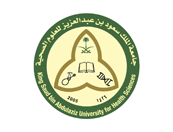Abstract
Purpose: In order to train more high-level general practitioners (GPs) to work in primary care institutions, China launched the 5þ3 model in 2015 as a way to educate GPs nationwide. In this study, we investigated the awareness of the 5þ3 model, career choices after graduation, and influences on GP career choice of undergraduate medical students from Zhengzhou University. Methods: The study population consisted of 288 undergraduate medical students from Zhengzhou University. We explored the students' awareness of the 5þ3 model, career choices after graduation, influences on general practitioner career choice and mental status by using a self-report questionnaire and the Chinese version of the 21-item Depression Anxiety Stress Scale. Results: We found 34.2% of students did not understand the new policy. Only 23.2% of students would choose to work as a GP after graduation, and those tended to be female, to have a monthly family income less than 4000 ¥, or to be from rural areas. Only 10% of undergraduate medical students expressed a preference to work at primary care institutions. The participants showed higher anxiety and stress scores than did a previously published group of Chinese college students, and those who chose to pursue higher education had more anxiety and stress than those who decided to become general practitioners. Discussion: More efforts should be made to popularize the 5þ3 model and mental intervention among medical students. More efforts should be tried to increase the income/welfare benefits and strengthen the infrastructure of primary care institutions to attract more medical students.
Recommended Citation
Wang, Shuang; Fu, Xiaojie; Liu, Ziyan; Wang, Bing; Tang, Youcai; Feng, Huifen; and Wang, Jian
(2018)
"General Practitioner Education Reform in China: Most Undergraduate Medical Students do not Choose General Practitioner as a Career Under the 5þ3 Model,"
Health Professions Education: Vol. 4:
Iss.
2, Article 8.
DOI: 10.1016/j.hpe.2017.05.001
Available at:
https://hpe.researchcommons.org/journal/vol4/iss2/8



